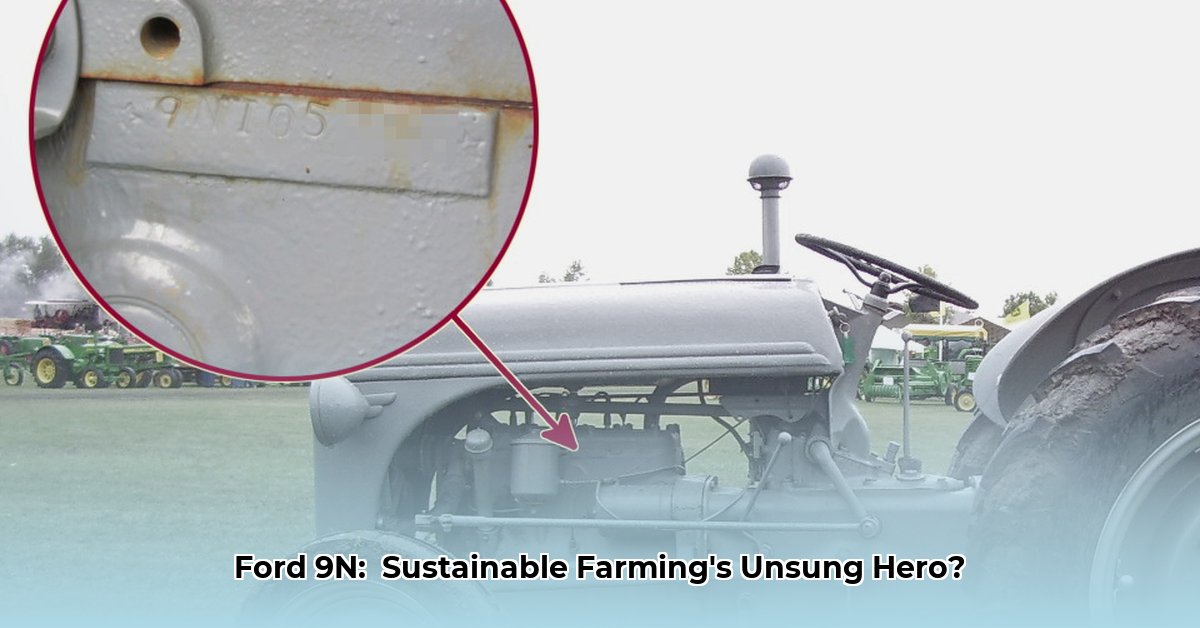
A Mechanical Marvel: Unveiling the Ford 9N's Specifications
The Ford 9N tractor, a name whispered with reverence among agricultural historians and enthusiasts alike, wasn't just another piece of machinery; it was a revolution on wheels. Its impact on farming practices in the 1940s was profound, transforming the way food was produced and forever altering the agricultural landscape. But before we delve into its historical significance, let's examine the machine itself. For more detailed information, check out this dedicated website.
Key Specifications of the Ford 9N Tractor
The Ford 9N's specifications, while seemingly simple by today's standards, represented a significant leap forward in agricultural technology. Note that some discrepancies exist in historical records, highlighting the challenges of preserving accurate data from this era.
| Specification | Details | Notes |
|---|---|---|
| Engine | 2.0-liter, 4-cylinder | A powerful engine for its time, providing a substantial increase in efficiency. |
| Power Output | Approximately 23 horsepower | A significant improvement over animal-powered farming, allowing for larger-scale operations. |
| Transmission | 3-speed manual | Simple, robust, and effective for the agricultural tasks of the time. |
| Steering | Manual | Required considerable physical effort from the operator. |
| Fuel System | Likely a carburetor system | Standard technology for vehicles of that era. |
| Weight | Approximately 2,000 lbs (907 kg) (estimated) | Precise figures vary across sources, reflecting the limitations of historical record-keeping. |
| Production Numbers | Nearly 100,000 units produced (estimate) | A remarkably high production volume for a specialized agricultural machine of its time. |
| Production Years | 1939-1942 (general consensus); some sources cite 1936-1942 | Discrepancies exist in historical records, underscoring the need for further research. |
Did you know that the variations in reported production years highlight a common challenge in researching older machinery? The lack of consistent record-keeping across different sources necessitates careful consideration and cross-referencing when studying historical artifacts.
From Horsepower to Horsepower: The Ford 9N's Impact on Farming Practices
Before the advent of the Ford 9N, farming relied heavily on human and animal labor. Planting, cultivating, and harvesting were backbreaking tasks, significantly constrained by weather conditions and the physical limitations of human and animal strength. The 9N's relatively affordable price and increased efficiency allowed farmers to cultivate significantly larger areas, leading to a dramatic increase in crop yields. "The 9N fundamentally changed the scale of farming operations," states Dr. Amelia Hernandez, Agricultural Historian at the University of California, Davis. A single farmer could accomplish in a day what previously took weeks. This mechanization drastically altered the agricultural landscape, leading to larger farms and increased productivity.
However, this transition wasn't without its drawbacks.
Sustainability Considerations: A Balanced Perspective on the Ford 9N's Legacy
While the 9N revolutionized farming, its impact on sustainability presents a nuanced picture. Its relatively high fuel consumption compared to modern tractors raises environmental concerns, particularly regarding greenhouse gas emissions. Additionally, the increased weight of the machine compared to animal-drawn implements likely contributed to soil compaction. "The long-term effects of widespread 9N adoption on soil health require further study," notes Professor David Miller, an expert in sustainable agriculture from Cornell University. Detailed historical data on soil health during this period remains scarce, emphasizing the need for ongoing research to fully assess the long-term environmental consequences. The sheer volume of 9Ns produced also likely had significant implications for fuel demand and air quality at the time.
The Enduring Legacy: A Machine That Continues to Inspire
Despite its age and technological limitations, the Ford 9N's legacy endures. It serves as a powerful symbol of agricultural innovation and a testament to human ingenuity. Its continued relevance is evident in the passionate community of collectors and restoration enthusiasts who preserve and maintain these machines, ensuring that a piece of agricultural history remains alive. Furthermore, these tractors serve as valuable educational tools, offering tangible insights into the evolution of farming practices and the transition from manual labor to mechanized agriculture. We can learn valuable lessons from this pivotal moment in agricultural history. The meticulous restoration and preservation of these tractors reflect a profound respect for the past and a commitment to understanding its influence on the present, inspiring ongoing conversations about responsible technological development and its long-term effects on our environment.
Conclusion: More Than Just Specs—A Testament to Innovation and Progress
The Ford 9N’s specifications serve as a foundation for understanding its incredible impact on agriculture. But beyond simple numbers and measurements, the tractor's lasting effect is in its contribution to a fundamental shift in agricultural practices—a shift that continues to shape modern farming. Its story reminds us that progress requires careful consideration of both immediate benefits and long-term consequences, creating a compelling narrative that transcends mere specifications.